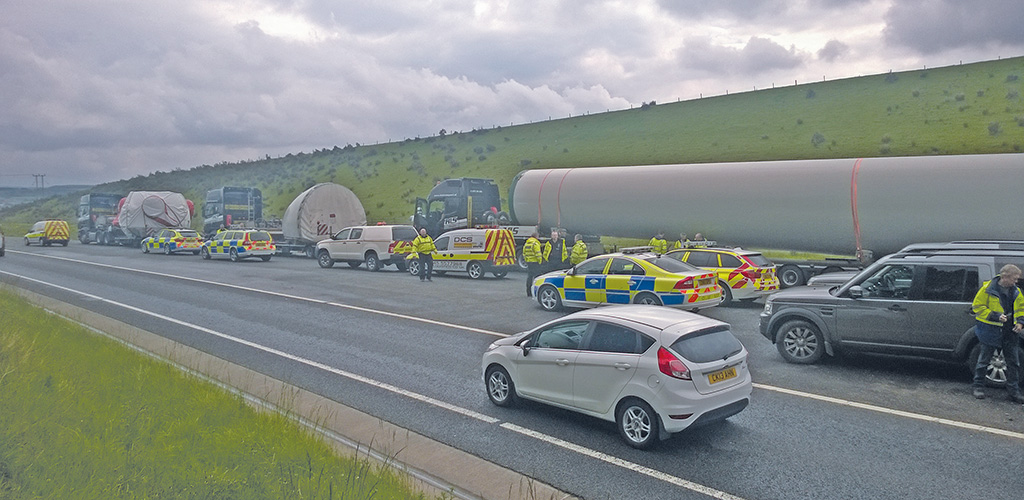Mar 11 | 2021
UK Formalizes Requirements for Abnormal Loads

 By Marcus Gough, HTA & Ainscough Crane Hire
By Marcus Gough, HTA & Ainscough Crane HireMany hundreds, indeed, possibly even thousands of abnormal loads move through the UK road network daily. Some you might notice – lots of flashing amber lights, some with accompanying escort vehicles to aid the protection of other motorists. But others you may not notice. They either do not “fulfill” the requirement to be escorted, or they move in the early hours when traffic levels are generally lower.
Whether noticed or not, they are here to stay and play a vital part in the UK economy supporting investment projects – from new roads to wind farms to nuclear power stations – and will play a major part in the UK government’s recent announcements to “build, build, build.”
For the most part the requirement of abnormal loads to be escorted has little legislative foundation in the UK. Pre-2004 this role was provided by the police in the interest of public safety and was very ad hoc, dependent on which police area you were operating in. Many times as an abnormal load driver I recall “waiting at” to be “taken over” by a neighboring force when crossing the county line.
Since 2004, abnormal loads escorting is no longer considered to be a core police duty. From that point on, it became standard practice for the majority of moves to be undertaken solely by private operators, and for police assistance only to be utilized where loads were exceptionally abnormal and would require the need for direct police control for stop and direct assistance, for example. For this service, police forces levy a specific charge; however they can only do so for loads moved under a permissive system if the escort is requested.
Interestingly, there is no requirement for a private escorting operator to undergo any training in the UK. There is a code of practice, but this is a voluntary scheme. Of course, there are many safe and “fully trained” operators out there, most (if not all) members of the UK’s Heavy Transport Association, or HTA. However, under current legislation it would be permitted for anyone to put a flashing amber beacon on top of their vehicle and escort an abnormal load weighing more than 100 tonnes.
No Compromise on Safety
We at the HTA believe that no compromise should be made in relation to safety, and that this area of operational importance should be, at the very least, pulled into a formal set of parameters that operators must sign up to. This would include formally recognized training to ensure that a minimum safety standard is obtained and maintained.
The HTA’s project SAbLE – “Safer Abnormal Load Escorting” – is a step towards safer national standards. The aim is to analyze good practice from the UK and elsewhere in the world to ensure that movement of these loads is performed as safely and efficiently as possible. The project, led by international road safety consultancy The Transafe Network, will examine current practices in risk assessment and escorting of abnormal loads, and identify future practices, which have the potential to enhance the safety and efficiency of these moves. This will include practices to improve safety for all road users, and the most efficient use of the road network.
The project aims to bring together a full range of stakeholders including abnormal load haulers, route surveyors, permit agents, consultants, abnormal load escorts, infrastructure owners and managers, equipment manufacturers and the police. It will examine practices in risk assessment and escorting of abnormal loads and identify future practices which have the potential to enhance the safety and efficiency of these movements.
By supporting this project, the industry can be confident in its support of the infrastructure in our growing economy, and is especially poignant given the current situation that the country, and indeed the world, finds itself within the Covid-19 pandemic.
Marcus Gough is chair of the UK’s Heavy Transport Association and head of transport for Ainscough Crane Hire Ltd.
Image credit: HTA
